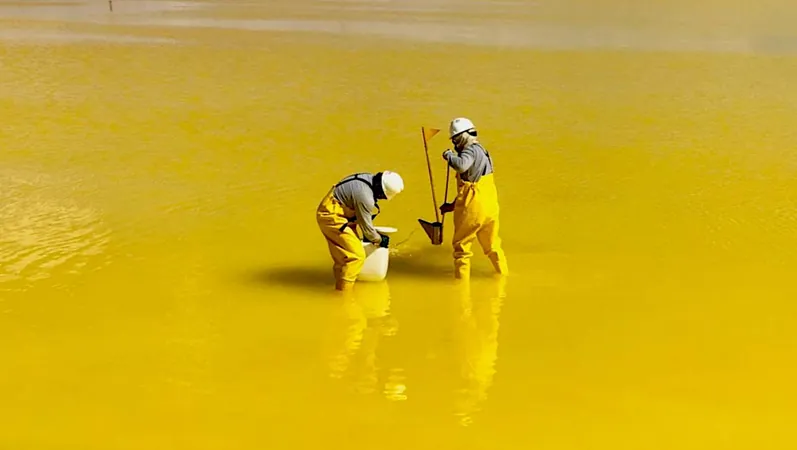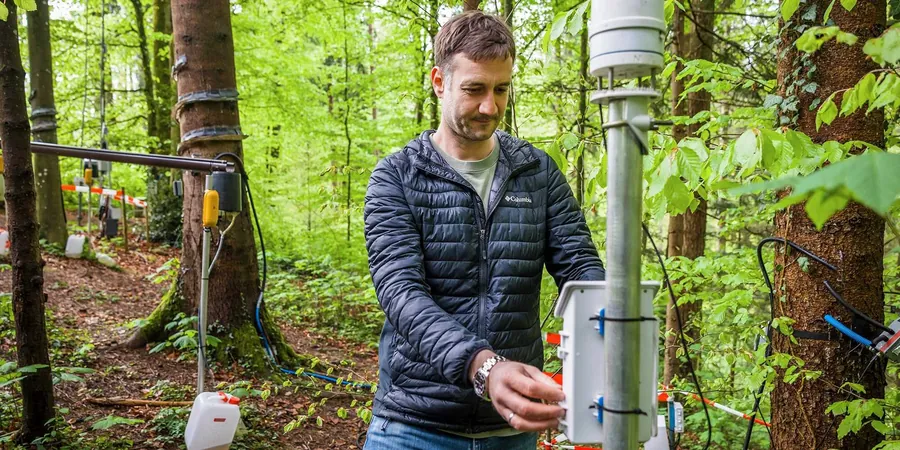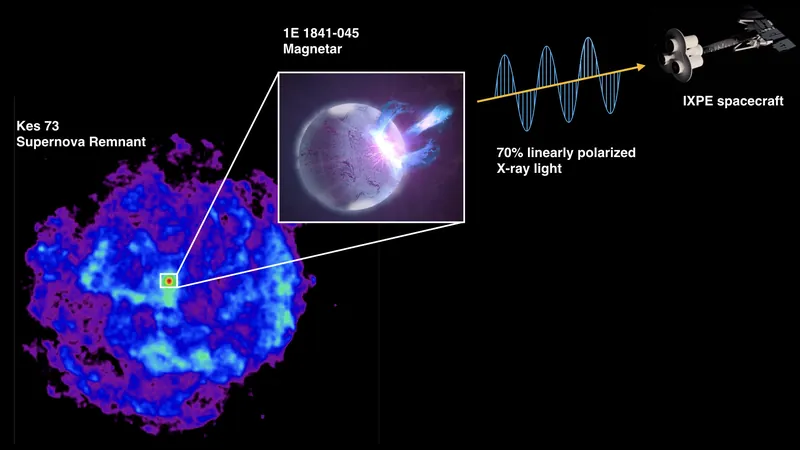
Discovering Life at the Edge: Microorganisms Thriving in Chile's Lithium-Heavy Salterns!
2025-01-22
Author: Arjun
Introduction
In the heart of Chile's Atacama Desert lies an astounding natural laboratory—solar salterns that serve as industrial lithium-concentration ponds. Researchers have turned their attention to these extremely hyper-saline environments to explore how far life can persist in conditions that most organisms would consider inhospitable.
Study Findings
The recent study reveals that the lowest recorded water activity (aw) level for life to exist is an astonishing 0.61. This remarkable finding expands our understanding of how certain microorganisms, particularly xerophilic fungi and yeasts, can not only survive but thrive in high-sugar environments. Their resilience offers insight into biological adaptations to extreme conditions, making them of great interest for various scientific fields, including astrobiology.
Microbial Diversity in Salterns
In contrast to these fungi, the highly saline conditions of the lithium ponds are dominated by prokaryotes—specifically the Halobacteria class and some Bacteroidetes species. These microorganisms have adapted to live in saturated sodium chloride solutions, where aw can drop to around 0.75. But it gets even more fascinating: while typical crystallizer ponds used in lithium concentration can reach aw levels as low as 0.1, the study sought to unravel just how much life could endure along this extreme salinity gradient.
Research Techniques
To achieve this, researchers deployed sophisticated techniques like epifluorescence microscopy and quantitative PCR (qPCR) to count cells and analyze genetic material. The process included optimizing a protocol for DNA extraction from briny samples, allowing the team to delve into the prokaryotic diversity present in the various ponds.
Groundbreaking Findings
The findings were groundbreaking. Archaeal DNA was exclusively identified in lower salinity ponds, while bacterial DNA was detected all along the salinity spectrum. Notably, cultured bacteria were viable down to an aw of 0.2, showcasing their incredible resilience. The once-thought impregnable limits of life have now been pushed back, hinting at the potential for microorganisms to survive even in some of the most extreme environments on Earth.
Implications for Astrobiology
Satellite imagery from sources such as Google Earth Pro highlighted the specific sampling sites, including major lithium extraction facilities like the SQM plant and previously sampled Albemarle plant. The graphical data provided in the study shows the abundance profiles of Bacteria and Archaea classes, correlating their presence with changes in aw and magnesium concentration during the industrial evaporation process.
Conclusion
These findings not only contribute to our understanding of extremophiles but also have implications for the search for life beyond Earth. If organisms can survive in such harsh conditions right here in the Atacama Desert, could similar forms of life exist in the salty environments of Mars or the icy moons of Jupiter and Saturn? The exploration of these extreme ecosystems continues to reshape our perspective on life's resilience and adaptability in the universe.
Stay Tuned
Stay tuned for more extraordinary discoveries as researchers delve deeper into the captivating world of microbial life!




 Brasil (PT)
Brasil (PT)
 Canada (EN)
Canada (EN)
 Chile (ES)
Chile (ES)
 Česko (CS)
Česko (CS)
 대한민국 (KO)
대한민국 (KO)
 España (ES)
España (ES)
 France (FR)
France (FR)
 Hong Kong (EN)
Hong Kong (EN)
 Italia (IT)
Italia (IT)
 日本 (JA)
日本 (JA)
 Magyarország (HU)
Magyarország (HU)
 Norge (NO)
Norge (NO)
 Polska (PL)
Polska (PL)
 Schweiz (DE)
Schweiz (DE)
 Singapore (EN)
Singapore (EN)
 Sverige (SV)
Sverige (SV)
 Suomi (FI)
Suomi (FI)
 Türkiye (TR)
Türkiye (TR)
 الإمارات العربية المتحدة (AR)
الإمارات العربية المتحدة (AR)